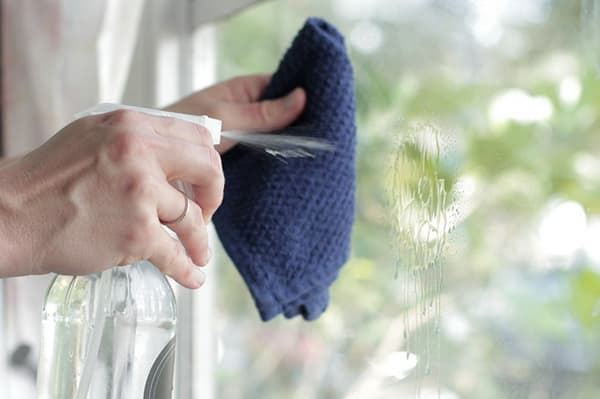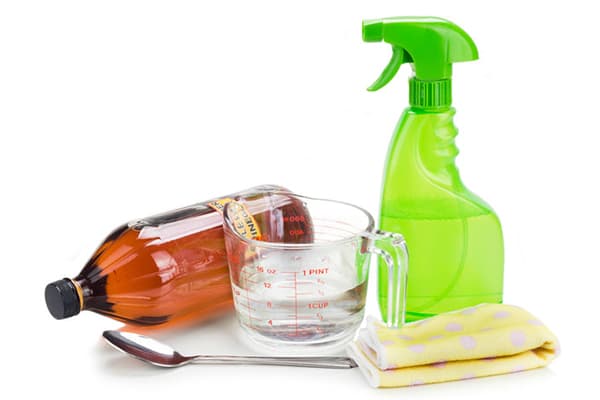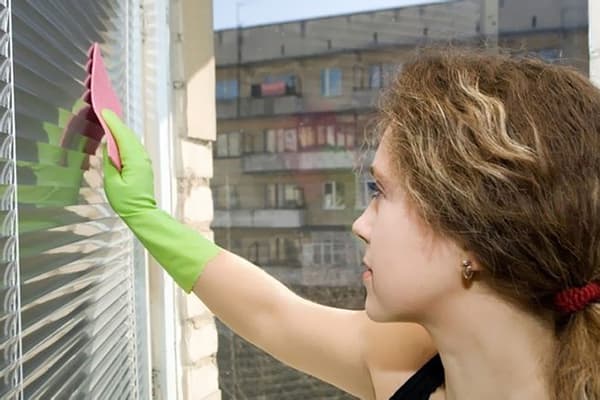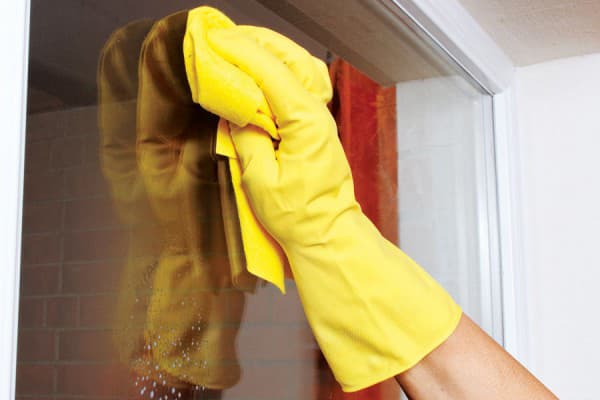How to wash windows and blinds with ammonia without streaks?
Content:
Liquid ammonia is an aqueous solution of ammonia, a clear, colorless liquid with a pungent odor. Its use is justified not only in the field of medicine, but also in everyday life. Many advise washing windows with ammonia - it helps to dissolve complex contaminants and avoid the appearance of stains.
What is needed
Before starting the process, it is advisable to prepare all the necessary tools. At home, this will require a container in which ammonia with water will be diluted. You will need to find a sponge or soft rag-free cloth in advance - in general, everything that will be convenient to work with. When working on large areas, it is recommended to use a spray gun (sprayer).
Washing windows with ammonia will not work without:
- paper, magazines or newspapers - they will help to wipe off the applied product;
- soft rags, with which they remove the remnants of the composition from the glass;
- rubber gloves, plastic glasses and other safety equipment - some women even use polyethylene raincoats to protect their skin and clothes.
When washing windows, you will need to get to distant surfaces. In a private house or apartment with a high ceiling, it is best to use stepladders, sliding stairs.
How to dilute ammonia - compounding recipes
In order for the composition with ammonia to be effective, certain proportions must be observed.
- If the composition does not intend to use additional funds, then you need to dilute five drops of ammonia in five liters of water. The resulting mixture is thoroughly mixed.
- You can improve the composition. For this, glycerin is most often used. The following proportions are observed: the same amount of glycerin and five ml of ammonia are added to 200 ml of water. The advantage of the composition is not only the thorough cleaning of the windows, but also the further protection of the plastic from spraying or the appearance of ice.
Washing steps
First, you need to remove all unnecessary windows (shutters and sashes) from the windows to facilitate access to the windows. It is recommended to remove the largest areas of dirt, as well as dust and cobwebs with a mop or a special brush.
Windows are washed according to the following algorithm:
- The sponge is lowered into the prepared solution, squeezed thoroughly and first wiped the frames, then the windowsill and slopes.
- To clean inaccessible places, such as window hinges or sash adjoining, use cotton swabs. They can be replaced with cotton toothpicks.
- After that, they take a new sponge (the previous one is thoroughly washed in warm water). It is moistened in a solution of ammonia and wiped the windows from top to bottom. This is necessary so that no dirty areas remain on the glass.
- Dry double-glazed windows with newspapers or paper. If they are not at hand, you can use a clean cloth, but polishing should be done only with dry materials. In this case, there will be no stains.
- At the last stage, the washing of the remaining elements, including sashes or blinds, is completed.
The procedure is preferably repeated two to three times. This is necessary so that the glass surface and all profiles are 100% cleaned from contamination. It is with the help of ammonia that it is possible to remove not only dirt from window frames, but also yellowness, which often forms on the surface of plastic.
How to clean blinds
To tidy up the blinds, you must open the window and place them parallel to the window frame.After that, a rag or sponge is dipped in the solution, each lamella is thoroughly wiped on both sides. Then the blinds are washed with warm water and wiped dry.
Precautionary measures
When working with ammonia at home, it is important to remember your own safety. To do this, you must:
- before starting work, open the windows and provide an influx of fresh air - it is important that the room is ventilated not only during washing, but also after that, because prolonged stay in a room with unpleasant odors can provoke malaise;
- use personal protective equipment (the minimum is gloves and glasses, but it is recommended to supplement them with a respirator to protect your respiratory system);
- have access to running water, so that if liquid gets into your skin or eyes, wash damaged areas as soon as possible.
It is not recommended to use other compositions from the category of household chemicals together with ammonia. This is especially true for products that contain chlorine. The fact is that as a result of their compounds, dangerous evaporation will occur, which can threaten health.
Pros and cons of the method
This method of washing windows without streaks has both advantages and disadvantages.
The pluses include the following:
- Acceptable price. A bottle of ammonia will cost much less than special solutions designed for this purpose.
- The method is quite simple. Yes, you need to prepare some tools in advance, but they are at hand in every home. In addition, you do not need to carry out lengthy preparation - the windows can be washed immediately after preparation of the solution.
- The most important plus for any housewife is efficiency. After all, with the help of ammonia, you can quickly remove any stains, as well as dust or dirt, which will not harm the plastic profile or the glass itself.
The disadvantages of the method include a specific smell, which many will find unpleasant. You can get rid of it only after thoroughly airing the room for several hours.
Another drawback is a threat to the nasal mucosa or skin. To avoid this danger, it is recommended to use rubber gloves and even a respirator during operation.
Using a solution with ammonia, you can bring to the perfect shine any objects made of glass. If after washing the windows there is little composition left, you should not pour it out, because with it you can clean many other items in the house.




